by John Steinbeck
The pearl study guide.
John Steinbeck wrote The Pearl during the time in which he was at the height of his fame. He had completed The Grapes of Wrath , for which he won the Pulitzer Prize for fiction and was renowned and reviled as a subversive, unpatriotic man who threatened the national interest through the socialist themes of his novels. This view of Steinbeck was inconsistent with his soft-spoken nature, but by 1944, when Steinbeck began to write The Pearl, Steinbeck had come to reconcile this aspect of his fame.
Steinbeck wrote The Pearl based on his personal convictions, and based the story on the biblical parable of a ?pearl of great price.' In this story, a jewel for which the merchant trades everything he owns becomes the metaphor for Heaven. Everything in the merchant's earthly existence, however, becomes worthless when compared to the joys of living with God in Heaven. However, Steinbeck uses the parable as a meditation on the American dream of success. Steinbeck, who himself had risen quickly to prosperity, explores how Kino , the protagonist of The Pearl, deals with his newfound prominence in the community and riches.
Steinbeck found a second inspiration for The Pearl in the tale of a young Mexican boy told in Steinbeck's Sea of Cortez. However, the boy in the original form of the story wished to use the pearl to buy clothing, alcohol and sex. The story contains several similar plot points, including the rapacious dealers and the attacks on the boy to find the pearl, that would recur in the story's final form.
The Pearl derives much of its force from the descriptions of the impoverished lifestyle of the Mexicans of La Paz, the location of the story. The plight of the impoverished is a consistent theme in Steinbeck's work, including The Grapes of Wrath and Of Mice and Men . Although these novels dealt with white protagonists, Steinbeck turned to the plight of Mexicans for The Pearl based on the 1942 and 1943 Zoot Suit Race Riots in Los Angeles.
By the time that Steinbeck wrote The Pearl, he had gained an interest in writing screenplays, and thus wrote the novel in a form suitable for easy adaptation to film. The story has a simple plot structure and an economy of characters, but unlike The Grapes of Wrath, Of Mice and Men, and East of Eden , Steinbeck did not adapt The Pearl. Instead, Steinbeck focused on screenplays written originally for the screen for his subsequent works.


The Pearl Questions and Answers
The Question and Answer section for The Pearl is a great resource to ask questions, find answers, and discuss the novel.
-other pearl divers
-rest of the people in village
What does Kino mean by, “This pearl has become my soul. “If I give it up I shall lose my soul…” Do you agree with him?
Kino allows the pearl to consume his life at the expense of everything else he holds dear. Do I agree with him? Money is nothing when compared with the people who love you...... absolutely not.
describe the setting of the novel "The Pearl"
The setting is a Mexican coastal village called La Paz, probably on the Baja Peninsula. The time is not mentioned although many feel it looks like the late 18th ot early 19th century.
Study Guide for The Pearl
The Pearl study guide contains a biography of John Steinbeck, quiz questions, major themes, characters, and a full summary and analysis.
- About The Pearl
- The Pearl Summary
- The Pearl Video
- Character List
- Chapter 1 Summary and Analysis
Essays for The Pearl
The Pearl literature essays are academic essays for citation. These papers were written primarily by students and provide critical analysis of The Pearl.
- The Pearl versus The Secret River
- The Pearl: Symbolism Analysis
- A Dollar Cannot Buy a Smile: Riches vs. Happiness in 'The Pearl'
- Women as a Voice of Reason in John Steinbeck’s “The Pearl”
- An Analysis of Imagery and Mood in John Steinbeck’s “The Pearl”
Lesson Plan for The Pearl
- About the Author
- Study Objectives
- Common Core Standards
- Introduction to The Pearl
- Relationship to Other Books
- Bringing in Technology
- Notes to the Teacher
- Related Links
- The Pearl Bibliography
Wikipedia Entries for The Pearl
- Introduction

57 pages • 1 hour read
A modern alternative to SparkNotes and CliffsNotes, SuperSummary offers high-quality Study Guides with detailed chapter summaries and analysis of major themes, characters, and more. For select classroom titles, we also provide Teaching Guides with discussion and quiz questions to prompt student engagement.
Chapter Summaries & Analyses
Prologue-Chapter 2
Chapters 3-4
Chapters 5-6
Character Analysis
Symbols & Motifs
Important Quotes
Essay Topics
Discussion Questions
Summary and Study Guide
The Pearl is a 1947 historical fiction novella by John Steinbeck. It is an expansion of his earlier short story, “The Pearl of the World,” published in the Woman’s Home Companion in 1945. Steinbeck also co-wrote the screenplay for a 1947 film adaption of the novella titled La perla, directed by Emilio Fernández. Citations in this guide correspond to the 1994 Penguin Books edition. The story, which is presented as a parable, follows a poor Mexican pearl diver who discovers a magnificent pearl only to find that it causes many more problems than it solves. Through the pearl diver’s experience, Steinbeck explores such topics as colonialism, greed, and family.
Content Warning: Please note that this guide references domestic violence, murder, and gun violence against a child.
Get access to this full Study Guide and much more!
- 7,350+ In-Depth Study Guides
- 4,950+ Quick-Read Plot Summaries
- Downloadable PDFs
Plot Summary
Kino , a young Native Mexican man, wakes up one morning in the brush house where he lives with his wife, Juana , and their infant child, Coyotito . Suddenly, a scorpion stings Coyotito. Kino and Juana ask the doctor in the nearby city of La Paz to treat Coyotito, but he refuses since they don’t have enough money.
The SuperSummary difference
- 8x more resources than SparkNotes and CliffsNotes combined
- Study Guides you won ' t find anywhere else
- 100+ new titles every month
A pearl diver by trade, Kino goes to work in the hopes of finding a pearl to pay the doctor. He soon finds an enormous, perfect pearl. With the wealth he hopes to gain from the pearl, Kino plans to buy clothes, tools, and weapons as well as to send Coyotito to school. As news of the pearl spreads, the town’s priest and the doctor visit Kino and his family, hoping to profit. The doctor poisons and then cures Coyotito to make it look like he saved him. Kino promises to pay the doctor once he sells the pearl. During the night, someone tries to steal the pearl, but Kino drives the intruder away.
The next day, Kino goes to the pearl dealers to sell the exceptional pearl. The dealers, who pretend to compete with each other but actually work for a single company, claim that the pearl has little value and offer a low price. Offended, Kino plans to take the pearl to the capital and sell it himself.
That night, after another attack on Kino, Juana begs him to get rid of the pearl; he refuses. When Kino falls asleep, Juana takes the pearl, intending to throw it back into the ocean, but Kino catches up to her at the beach and violently seizes the pearl, injuring Juana. As Kino returns home, unknown assailants again attack him; he kills one of them and the pearl rolls away. Juana recovers the pearl, which she now decides to keep, realizing that their old life is gone forever. She also manages to save Coyotito when other attackers burn their house down. Kino, Juana, and Coyotito take cover in the house belonging to Kino’s older brother, Juan Tomás , and his wife, Apolonia. Juan Tomás encourages Kino to get rid of the pearl, but Kino again refuses.
The next night, Kino, Juana, and Coyotito set out on the road northward, trying not to leave any tracks. However, the next day, they see three men tracking them in the distance. Kino and his family leave the road and head for the mountains. Kino hides Juana and Coyotito in a cave and plans to attack the men at night. When Coyotito cries, the trackers think the sound is coming from a coyote, and they shoot towards the cave, killing Coyotito. At that moment, Kino attacks and kills the trackers. The next day, he and Juana return home and throw the pearl into the sea.

Don't Miss Out!
Access Study Guide Now
Related Titles
By John Steinbeck
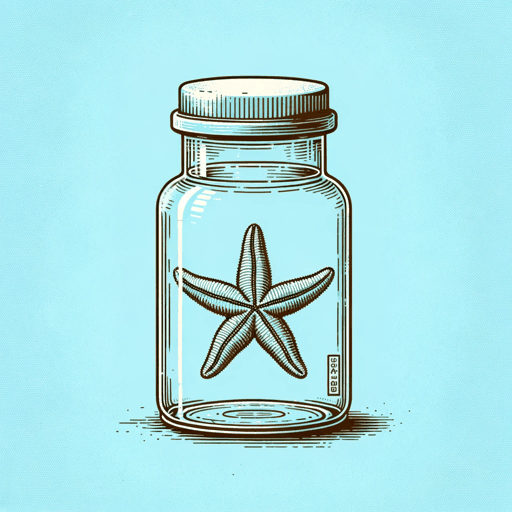
Cannery Row
John Steinbeck
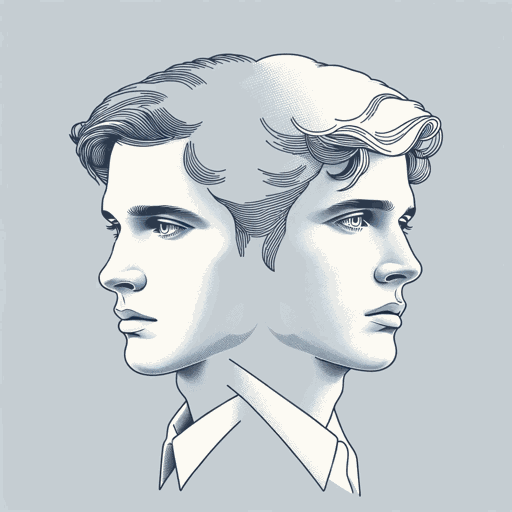
East of Eden

In Dubious Battle
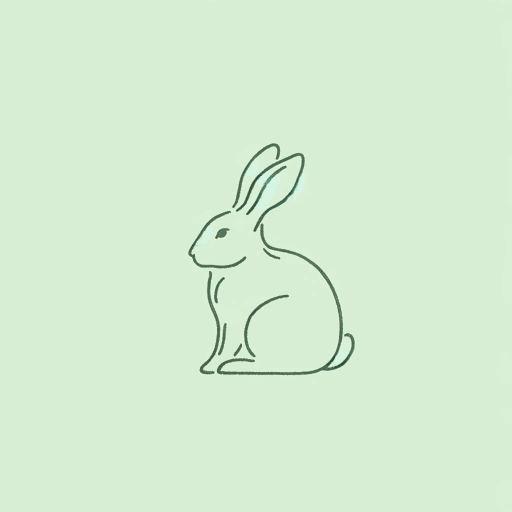
Of Mice and Men

Sweet Thursday
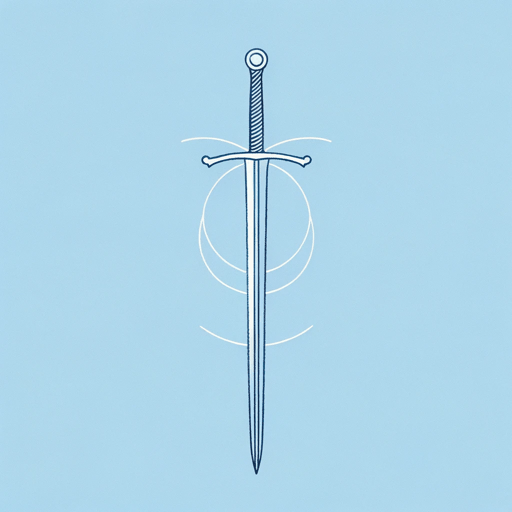
The Acts of King Arthur and His Noble Knights

The Chrysanthemums

The Grapes of Wrath
The Harvest Gypsies: On the Road to the Grapes of Wrath
The Log From The Sea of Cortez
The Long Valley
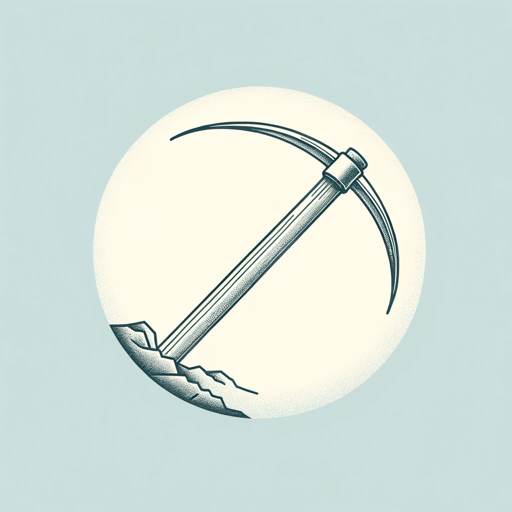
The Moon Is Down
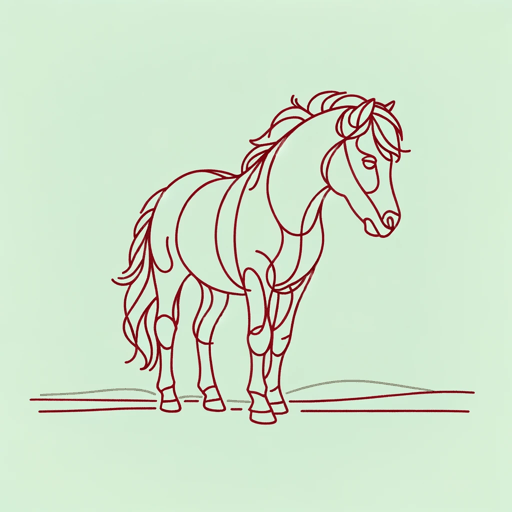
The Red Pony
The Wayward Bus
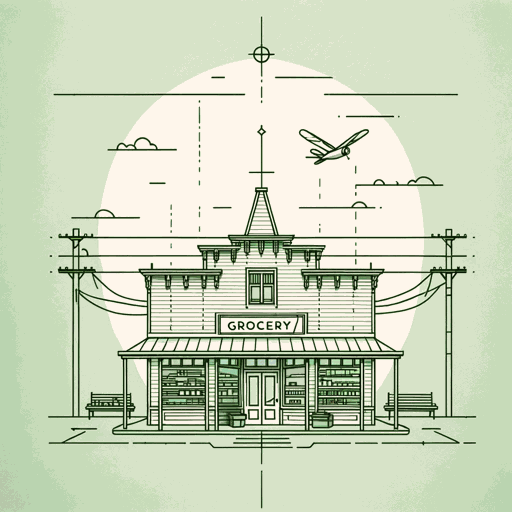
The Winter Of Our Discontent
To a God Unknown
Tortilla Flat

Travels With Charley
Featured Collections
Allegories of modern life.
View Collection
American Literature
Challenging authority, colonialism & postcolonialism, good & evil, nobel laureates in literature.
John Steinbeck
- Literature Notes
- A General Critical Approach
- Book Summary
- About The Pearl
- Character List
- Summary and Analysis
- Character Analysis
- Introduction
- The Doctor and the Priest
- John Steinbeck Biography
- Critical Essays
- Source of The Pearl
- Essay Questions
- Cite this Literature Note
Critical Essays A General Critical Approach
As Steinbeck mentioned in his introduction to this novel, "If this story is a parable, perhaps everyone takes his own meaning from it and reads his own life into it." Likewise, as was noted in the introduction to these Notes, there are many different critical approaches. The following interpretation is only one of many which the novel can support, and it need not be seen as the only definitive approach.
Basically, there are two forces working through the novel — primitive man alone with his labors, toiling close to nature and possessing an innate dignity; and opposing him, man as a predator, as a parasite or a vampire, sucking at the vein of life and bringing about death and destruction to the more primitive unit.
The first group is, of course, represented by Kino, his family and his friends who make up the primitive community of fishermen and divers. When we are first introduced to Kino's world, it is warm and content, bathed with the beautiful Song of the Family, which gently soothes his heart and makes his life seem fulfilled. Kino and Juana speak very little to each other — it is as though there is no need for words — their communication is innocent and innately understood. In contrast, there is the world of the pearl buyers and the world of the doctor and the priest, representatives of the world with whom Kino and Juana cannot communicate. This is a world which feeds parasitically on these simple people of Kino's village; the doctor's avarice, for example, sends numerous corpses to the church, and the priest is only a puppet of the pearl buyers who are, in turn, only fingers on the arms of some unknown force which has no concern for Kino's class of people.
These two groups are brought together by the use of animal imagery, which Steinbeck uses constantly throughout the novel to comment upon the predatory nature of so-called civilized society. As an illustration, when Coyotito is bitten by the scorpion, the baby's life is in danger, and this horrible, deadly insect makes Kino and Juana realize their ignorance; thus, because of their love for their son, and because of their not knowing about the doctor's fraud, they turn to him for assistance. They believe that because of the doctor, there appears to be a world of possibilities, but in trying to move from one world to another (represented by the long processional, in which the entire village follows Kino and Juana), Kino encounters obstacles which he cannot overcome. For example, Kino suffers mental torture, which is expressed physically when he splits his knuckles battering against the doctor's door in futile rage.
Kino's rage is further expressed when he rows out into the Gulf, and on his first dive, he goes deeper than usual — so deep as to possibly endanger his life; he stays down much longer than usual, but he returns with the Pearl of the World. The animal imagery (or the prey imagery) is now highly functional in relationship to Kino's attitudes. Steinbeck has clearly shown us prior to the discovery of the pearl how the dogs of La Paz feed upon the fish, the larger fish feed upon smaller fish, and every organism depends upon preying upon some other animal. Similarly, as Kino's mind becomes tainted because of his attempted association with the foreign doctor, the pearl also becomes symbolically tainted. When Kino acquires the pearl, it is indeed the most beautiful pearl in the world. But Steinbeck is careful to let us know that this pearl was created through the irritation and the suffering of another organism — the oyster. The beauty of the pearl is not necessarily either evil or good. It only becomes either good or evil when Kino and the pearl buyers begin to project their individual desires on it.
When Kino dives for the pearl, his heart is filled with anger and frustration; he is fierce and animal-like in this predatory mood. When he returns to the world above the floor of the Gulf, he is in possession of the Pearl of the World, but the beauty of the pearl slowly begins to dim; it turns ulcerous because Kino's heart changes. Here, Steinbeck's irony is extremely subtle. On a surface level, it seems that the things which Kino wants are good things: he wants to be married in the church, and he wants Coyotito christened. Juana has been saving the baby's christening clothes until they could find a pearl worthy enough to pay for the occasion. The ultimate achievement to be wrought by the pearl is an education for Coyotito and a rifle for Kino. On a surface level, it appears that Kino wants the right things. But the irony is that Kino and Juana are a truly married couple — they are one as man and wife — they are body and soul. Yet, Kino wants the social recognition of a "foreign marriage" performed by a circumspect priest in a "foreign" religion, and he wants the elegant religious sanction of this foreign religion. (We should remember that earlier, when the scorpion bit Coyotito, Juana first uttered charms in her native religion, and it was only as an afterthought that she added a couple of Hail Marys. Furthermore, Kino's new desires are apparently to please members of this new world and its priest rather than his native gods and people. And while it is noble that he wants Coyotito to have an education, the advantages that Kino wants for him lie in the new, foreign world. Kino, still suffering from his recent encounter with the foreign doctor, still wants his son to become a part of the world which has just rejected him.
The ugliness of the new world which Kino so desperately desires to become a part of begins to express itself immediately, but in the same way that Steinbeck shows that the real community is hidden behind paved streets and in gardens that are protected by stone walls, so also the people who attack him are never seen; they remain simply evil forces in the dark. Openly, the doctor comes first with the poisonous white powder which has the power to kill Coyotito; then the priest comes, blessing a marriage that he never performed. But Kino's simple ignorance cannot understand whether or not the doctor has some miraculous knowledge, and thus he yields to the doctor's horrid practice; likewise, the priest represents a similar mysterious religious force. Even though Kino instinctly knows that he is being cheated by the pearl buyers, he clings to the pearl because his very manhood has been challenged by the "dark ones," the unknown ones who attacked him during the night. Kino's predicament is that of any primitive man — his manhood will not allow him to surrender; to complicate matters, Kino has lost one world and has not gained another. In short, Kino is without a society.
As Kino becomes aware of the evil forces trying to rob him of his treasure, he realizes that the pearl has now taken on a different meaning. Earlier, it meant an education for Coyotito and a marriage in the church: now, as Kino and Juana plan their escape, Juana recognizes and Kino acknowledges: "This pearl has become [Kino's] soul." Now Kino is fighting only to prove that he is a man who can protect that which is his. As he becomes like a hunted animal, it is ironic that the reader's sympathy is even more with him now than it was earlier. Earlier, Steinbeck used Juana's fears to express the readers' fears. We heard of the attacks from her point of view, and we followed her as she joined Kino in his fight with the "dark ones." But after Steinbeck shows us how Kino's brush house was burned, his canoe destroyed, and how he is being tracked by experts, we sympathize entirely with Kino. For him to relinquish the pearl at this point would not be brave, and at this point, bravery is foremost in Kino's mind.
However, after Coyotito has been killed and after Kino has killed the three trackers, there is nothing left for Kino and Juana to do but to return to town. Yet they do not return in defeat. Counting the three trackers and the man who attacked Kino and was knifed by him, Kino has now killed four men; he has lost his only child, has had his brush house burned and has his canoe destroyed, and yet through it all he has retained his primitive sense of his own manhood and his own worth. The return to the town was Kino's voluntary choice; thus, it is also a moral choice. Kino does not return to accept whatever price that the pearl buyers will offer him, he does not return seeking forgiveness, and he does not return out of fear; Kino's return to town indicates that even though everything that a man possesses, including his beloved son, may be lost, yet man need not be defeated. The throwing of the pearl back into the Gulf, along with his return to the village, comprise Kino's ultimate defiance of a world that refuses to grant him the dignity to which he thought he was entitled. We feel that Kino must know that returning to town could mean his death, but in returning to town, Kino attains a dignity which cannot be stripped from him. Kino's return is not only his defiance of a corrupt world, it is also a simple victory of all that is good in man. As Steinbeck let us know through the animal imagery, in the mountains Kino became an animal; he was tracked and hunted without mercy. In contrast, by returning to his known world, Kino becomes larger than life because no force can now defeat him.
As the people watch Kino and Juana pass through the town to the shore of the Gulf, they all recognize this change that has taken place in him; they all recognize Kino's towering strength and his absolute majesty. Juana also recognizes this as she stands proudly beside him and refuses to throw the pearl herself; it is for the newborn man who is still master of his soul to dispose of the pearl as he sees fit.
Therefore, we realize more fully the meaning of Steinbeck's statement "If his story is a parable, perhaps everyone takes his own meaning from it and reads his own life into it." In these lines, Steinbeck sets up no antitheses such as good versus evil, or black versus white. Steinbeck even inverts the major symbol of the pearl. A pearl usually signifies purity and innocence, qualities which a man loses and tries to find. In this novel, Kino possesses innocence and purity at the beginning of the novel, and these simple, beautiful qualities are destroyed after his discovery of the pearl. By inverting the symbolism, Steinbeck emphasizes the parable aspect of his story — that is, we examine what happens to a man when he acquires something so valuable as the Pearl of the World but, after doing so, loses his human dignity and worth in the process. The pearl, then, is a complex symbol — it makes man vulnerable to attacks on his life, but it also makes him stubborn and determined to protect that which is his. Kino and his people have been exploited for four hundred years, and while they fear the foreigners and the unknown, there is also rage and hatred against these intruders. Yet like Kino, they believe that one day they will find the Pearl of the World which will set them free. Thus, if Kino's life is a parable, then it is a parable for many people's own lives: nothing in life is black or white, innocent or evil; everything is a shade somewhere in between. Kino is tricked into seeing and wanting things that are not, in themselves, innately good. He feels that education brings a knowledge that sets a man free. He feels that the church blesses and makes proper husbands and wives. But these things are good only if man is not forced to crawl like an animal to achieve them — that is, a church wedding is not good if one has to lose his manhood to achieve it.
Previous Source of The Pearl
Next Essay Questions

John Steinbeck
Everything you need for every book you read..
Social structures such as the family, village, and town, are central to The Pearl. The central unit, for Kino and Juana , is the family. Their daily lives and routines are organized around the family, and they make sacrifices for each other and for their son, Coyotito .
Outside the family’s hut is the village, which is small and generally comes together to follow and support Kino and his family when they are in need…
Good vs. Evil
The plot of The Pearl is driven by a constant struggle between the morally opposite forces of good and evil. Evil in The Pearl can appear in both man ( the doctor ) and nature ( the scorpion ); both evil man (the doctor) and good man ( Kino ); both ugly shape (the scorpion) and beautiful shape ( the pearl ). While the scorpion’s evil takes the form of lethal poison, man’s evil throughout…
Race, Tradition, and Oppression
Kino and Juana ’s racial heritage both provides them with the grounding force of ritual and tradition and deprives them of power under the reign of European colonizers. They continue to sing the songs they have inherited from their ancestors, but they also continue to be oppressed as their ancestors were, by white people like the doctor and by people with economic influence like the pearl-dealers . Their oppression is brought increasingly to light throughout…
Value and Wealth
The value and evaluation of material entities is a central theme in The Pearl . The value of the pearl , for example, requires reassessment throughout the novel: at the moment of its discovery, it seems to be worth Coyotito ’s life. That the pearl-dealers then so underestimate the price of the pearl reveals how distant the monetary worth of something can be from its perceived value, and how much value is determined by those…
Nature is a powerful force in The Pearl . Natural elements often serve to instigate crucial plot-points. Sometimes they protect (as in the plants that keep Juana and Kino temporarily hidden from the trackers) and feed (as in the fire that cooks the corncakes); while at other times, they destroy (as in the scorpion that poisons Coyotito and the fire that burns down Kino’s house). And throughout the novel, Kino is described as being, like…
- Entertainment
- Environment
- Information Science and Technology
- Social Issues
Home Essay Samples Literature
Essay Samples on The Pearl
Imagery and character analysis in the pearl.
In the very beginning of the book, Kino watches as his son, Coyotio sleeps. While he is sleeping, Coyotito is stung by a scorpion despite Kino’s efforts to catch it and kill it. They go to the doctor to get Kino treated for the sting...
- Character Analysis
- Imagery in Literature
The Theme Of Group Behavior In The Pearl By John Steinbeck
The article is a study exploring the pattern of group activity in John The Pearl's novel. There's a major influence on other individuals from Stein show group behavior. We are the long-term basis of human life. Steinbeck's group-man theory is based on Darwinian interpretation of...
- John Steinbeck
Theme of Greed in John Steinbeck’s Novel The Pearl and Jack London's Story A Piece of Steak
In John Steinbeck’s realistic fiction novel, The Pearl, Kino drastically changes his life when he finds a pearl of great value. Local authors, Jack London and John Steinbeck, both use greed, murder, and poverty in different ways to express their themes. Greed is a theme...
John Steinbeck's The Pearl Through the Prism of New Formalism
Using the New Formalism as a lens to analyze Pearls, the reader can see that Steinbeck uses images, symbols and music to develop a theme according to which luck can lead people with good intentions to the path of evil and negative. In modern society,...
- The New Deal
John Steinbeck: Literary Works, Life and People Who Inspired Him
Recurring Ideas in Of Mice and Men, Travels With Charley, and The Pearl The Desire to Escape One recurring theme that is displayed in Of Mice and Men, Travels With Charley, and The Pearl is the desire to escape, which causes the characters to venture...
- Literature Review
Stressed out with your paper?
Consider using writing assistance:
- 100% unique papers
- 3 hrs deadline option
Best topics on The Pearl
1. Imagery And Character Analysis In The Pearl
2. The Theme Of Group Behavior In The Pearl By John Steinbeck
3. Theme of Greed in John Steinbeck’s Novel The Pearl and Jack London’s Story A Piece of Steak
4. John Steinbeck’s The Pearl Through the Prism of New Formalism
5. John Steinbeck: Literary Works, Life and People Who Inspired Him
- Hidden Intellectualism
- A Raisin in The Sun
- William Shakespeare
- Sonny's Blues
- The Crying of Lot 49
- Alice in Wonderland
- A Separate Peace
- Science Fiction
- A Room of One's Own
Need writing help?
You can always rely on us no matter what type of paper you need
*No hidden charges
100% Unique Essays
Absolutely Confidential
Money Back Guarantee
By clicking “Send Essay”, you agree to our Terms of service and Privacy statement. We will occasionally send you account related emails
You can also get a UNIQUE essay on this or any other topic
Thank you! We’ll contact you as soon as possible.
74 The Pearl Essay Topic Ideas & Examples
🏆 best the pearl topic ideas & essay examples, 📌 most interesting the pearl topics to write about, 👍 good research topics about the pearl, ❓ the pearl essays questions.
- John Steinbeck’s The Pearl As the title of the book suggests, the story is based on the enormous pearl Kino finds, and the events that took place as people tried to hunt Kino for possessing the pearl.
- The Pearl by John Steinbeck Kino plans to travel to another city to sell this pearl, but his brother warns that the pearl is evil and he should just sell it. We will write a custom essay specifically for you by our professional experts 808 writers online Learn More
- Love and Death in “The Pearl” by John Steinbeck He shouts his good fortune to his fellow divers, and before he reaches home, the news is already known to the inhabitants of the village and the town, including the priest and the doctor.
- The Support of Symbolism, Plot, and Characterization to the Theme in “The Pearl” by John Steinbeck
- An Analysis of the Setting in the Novel “The Pearl” by John Steinbeck
- Loyalty Demonstration in “The Odyssey” and “The Pearl”
- Comparing Characterization in Steinbeck’s “Of Mice and Men” and “The Pearl”
- An Analysis of Virtue in “The Pearl” and “Of Mice and Men” by John Steinbeck
- The Symbolism of the Pearl in the Novel “The Pearl” by John Steinbeck
- The Value of the Pearl in John Steinbeck’s “The Pearl”
- An Examination of the Configuration in John Steinbeck’s Novel “The Pearl”
- Constant Struggle Between the Morally Opposite Forces of Good and Evil in “The Pearl”
- Kino and Juana’s Racial Heritage, Tradition, and Oppression in Steinbeck’s “The Pearl”
- The Importance of the Writing Style in John Steinbeck’s “The Pearl”
- A Story of Man’s Self-Destruction in Steinbeck’s “The Pearl”
- Transformation Due to Money in “The Pearl” by John Steinbeck
- The Deterioration of Kino’s Character Due to Greed in “The Pearl” by John Steinbeck
- The Dramatic Changes in the Life of Kino in “The Pearl” by John Steinbeck
- Humanity’s Struggle With Greed Depicted in John Steinbeck’s “The Pearl”
- The Theme of Obsession in “The Pearl” by John Steinbeck
- The Tale of the Pearl as Told by Juana, a Character in “The Pearl” by John Steinbeck
- An Analysis of the Theme of Selfishness in “The Pearl” by John Steinbeck
- The Influence of Power and Authority on the Main Character’s Lifestyle in “The Pearl” by John Steinbeck
- Disclosure of the Theme of Class Struggle in “The Pearl” by John Steinbeck
- The Role of Ignorance in “The Pearl” by John Steinbeck
- Financial Gaps in Mexico and “The Pearl” by John Steinbeck
- The Role of Economic and Social Oppression in “The Pearl” by John Steinbeck
- The Destructive Influence of Materialism in “The Pearl” by John Steinbeck
- Nature in Crucial Plot-Points in Steinbeck’s “The Pearl”
- The Value and Evaluation of Material Entities as a Central Theme in “The Pearl”
- The Influence of the Social and Cultural Context on the Life of the Protagonist in “The Pearl”
- Differences Between Kino’s People and the Doctor in “The Pearl” by John Steinbeck
- The Portrayal of Verism Through “The Pearl” by John Steinbeck
- The Pursuit of Material Wealth and Happiness in “The Pearl” by John Steinbeck
- Modern Interpretation of “The Pearl” From a Personal Point of View
- Disappointment in Steinbeck’s “The Pearl”
- Evaluating Very Simplistic View in Great Depth in “The Pearl” by John Steinbeck
- “The Pearl” by John Steinbeck Movie Versus Novel
- The Use of Vivid Description in “The Pearl” by John Steinbeck
- The Moral Values in Life in “A Raisin in the Sun”, “Almost a Woman”, and “The Pearl”
- The Use of Imagery and Mood in “The Pearl” by John Steinbeck
- The Relationship Between Juan and Coyotito in the Creative Story of “The Pearl”
- Common Problems in the 1940s in “The Pearl” by John Steinbeck
- Relationship Between the Life of John Steinbeck and His Characters in the Novel “The Pearl”
- How Does Steinbeck Present Race in “The Pearl”?
- What Does “The Pearl” Symbolize?
- How Power and Authority Affect the Main Character’s Lifestyle in “The Pearl”?
- How Is Poverty Dehumanizing in “The Pearl”?
- What Is the Moral Lesson of “The Pearl”?
- How Is Ambition Shown in “The Pearl”?
- Why Are the “Dark Ones” and the Trackers Never Identified in “The Pearl”?
- Is “The Pearl” a Parable or Allegory?
- What Is the Personification in “The Pearl”?
- How Does the Pearl Impact Kino and Juana Relationship?
- What Do the Beggars Symbolize in “The Pearl”?
- What Does Coyotito Symbolize in “The Pearl”?
- What Does Kino’s Canoe Symbolize in “The Pearl”?
- How Does Steinbeck Characterize the Doctor in “The Pearl”?
- What Is the Main Theme of “The Pearl”?
- What Is the Function of the Many Songs That Kino Hears During “The Pearl”?
- Who Is the Antagonist of “The Pearl”?
- Are Kino and Juana Defeated or Triumphant at the End of “The Pearl”?
- What Is the Mood of “The Pearl”?
- What Is the Social Criticism in “The Pearl”?
- How Does “The Pearl” Conclusion Complete Steinbeck’s Moral Argument?
- What Role Does Family Play in “The Pearl”?
- Was “The Pearl” Evil or Honest?
- Why Is the Scorpion Important in “The Pearl”?
- What Is the Main Conflict in the Story “The Pearl”?
- How Greed Is Portrayed in “The Pearl”?
- What Is the Conclusion of “The Pearl”?
- How Does Steinbeck Combine Naturalistic and Symbolic Elements in “The Pearl”?
- How Is Irony Used in “The Pearl”?
- What Does the Water Symbolize in “The Pearl”?
- Chicago (A-D)
- Chicago (N-B)
IvyPanda. (2024, March 2). 74 The Pearl Essay Topic Ideas & Examples. https://ivypanda.com/essays/topic/the-pearl-essay-examples/
"74 The Pearl Essay Topic Ideas & Examples." IvyPanda , 2 Mar. 2024, ivypanda.com/essays/topic/the-pearl-essay-examples/.
IvyPanda . (2024) '74 The Pearl Essay Topic Ideas & Examples'. 2 March.
IvyPanda . 2024. "74 The Pearl Essay Topic Ideas & Examples." March 2, 2024. https://ivypanda.com/essays/topic/the-pearl-essay-examples/.
1. IvyPanda . "74 The Pearl Essay Topic Ideas & Examples." March 2, 2024. https://ivypanda.com/essays/topic/the-pearl-essay-examples/.
Bibliography
IvyPanda . "74 The Pearl Essay Topic Ideas & Examples." March 2, 2024. https://ivypanda.com/essays/topic/the-pearl-essay-examples/.
- Grapes of Wrath Ideas
- The Crucible Research Topics
- The Old Man and the Sea Research Topics
- Call of the Wild Questions
- The Metamorphosis Research Topics
- Julius Caesar Research Topics
- The House on Mango Street Research Topics
- I Know Why the Caged Bird Sings Research Ideas
- The Yellow Wallpaper Ideas
- Heart of Darkness Essay Ideas
- The Outsiders Essay Titles
- Lord of the Flies Research Ideas
- Hunger Games Questions
- Candide Essay Titles
- A Modest Proposal Essay Ideas
Home — Essay Samples — Literature — The Pearl — Symbolism in John Steinbeck’s the Pearl
Symbolism in John Steinbeck’s The Pearl
- Categories: Book Review Symbolism The Pearl
About this sample

Words: 917 |
Published: Oct 2, 2020
Words: 917 | Pages: 2 | 5 min read
Works Cited:
- Bregman, P. (2019). Time management hacks: 10 ways to do more with less. Harvard Business Review. Retrieved from https://hbr.org/2019/06/time-management-hacks-10-ways-to-do-more-with-less
- Covey, S. R. (2015). The 7 habits of highly effective people: Powerful lessons in personal change. Simon and Schuster.
- Duhigg, C. (2016). Smarter, faster, better: The secrets of being productive in life and business. Random House.
- Grant, A. M. (2016). Originals: How non-conformists move the world. Viking.
- Hall, S. S. (2019). Einstein's clocks, Poincaré's maps: Empires of time. W. W. Norton & Company.
- Kondo, M. (2019). The life-changing magic of tidying up: The Japanese art of decluttering and organizing. Ten Speed Press.
- Lakein, A. (2013). How to get control of your time and your life. Signet.
- McKeown, G. (2014). Essentialism: The disciplined pursuit of less. Crown Business.
- Newport, C. (2016). Deep work: Rules for focused success in a distracted world. Grand Central Publishing.
- Vanderkam, L. (2016). Off the clock : Feel less busy while getting more done. Penguin.

Cite this Essay
Let us write you an essay from scratch
- 450+ experts on 30 subjects ready to help
- Custom essay delivered in as few as 3 hours
Get high-quality help

Verified writer
- Expert in: Literature

+ 120 experts online
By clicking “Check Writers’ Offers”, you agree to our terms of service and privacy policy . We’ll occasionally send you promo and account related email
No need to pay just yet!
Related Essays
6 pages / 2692 words
3.5 pages / 1676 words
3 pages / 1406 words
6.5 pages / 3030 words
Remember! This is just a sample.
You can get your custom paper by one of our expert writers.
121 writers online
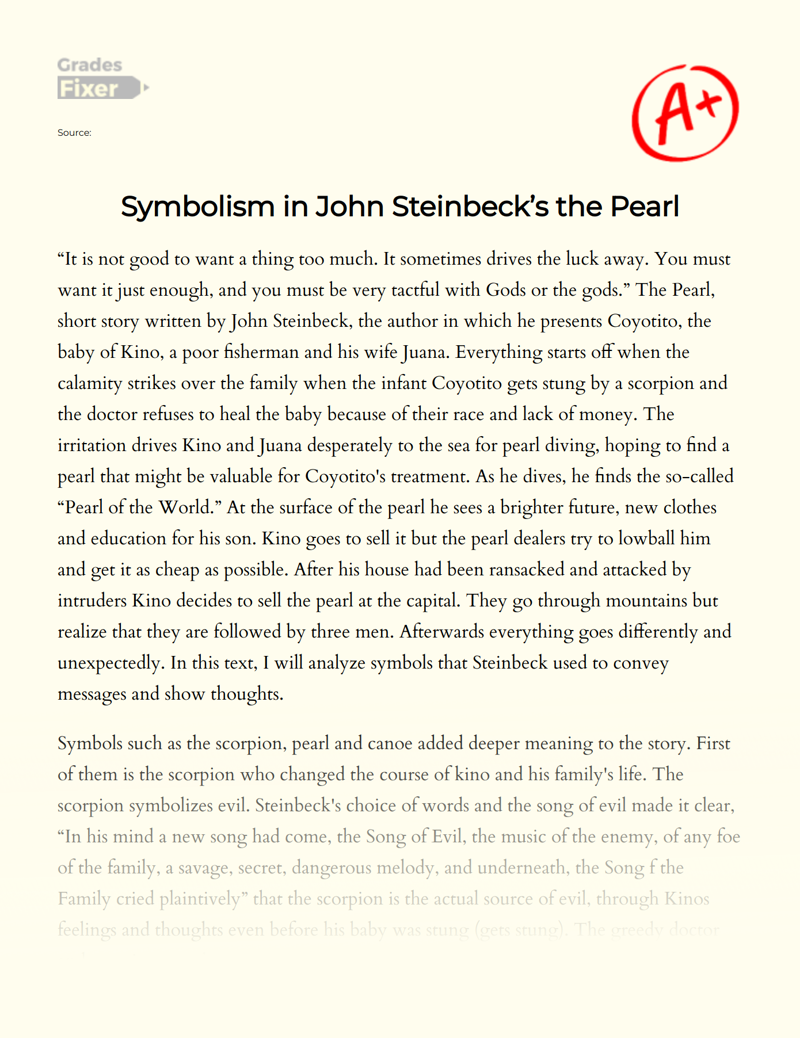
Still can’t find what you need?
Browse our vast selection of original essay samples, each expertly formatted and styled
Related Essays on The Pearl
In Chapter 5 of John Steinbeck's novel, "The Pearl," the protagonist, Kino, experiences a series of events that test his will and determination. This chapter delves deeper into the consequences of finding the pearl and the [...]
Bloom, H. (Ed.). (2003). John Steinbeck's "The Pearl". Infobase Publishing.Campbell, M. (2016). Greed in John Steinbeck's "The Pearl". The Explicator, 74(2), 122-124.Davis, R. L. (2015). John Steinbeck's "The Pearl" and His [...]
This story is about kino finding a pearl and the effects of this. Kino and juana are the main characters of the story and want to change their poor life circumstances to a wealthier lifestyle when they found the pearl. They [...]
God, Glory, and Gold. These are the three G’s of European colonization, and the same three G’s that would lead to the destruction of entire civilizations of native people and their forced submission to European ethnic and [...]
Have you ever found yourself captivated by a story that delves deep into the complexities of human nature and the pursuit of wealth? John Steinbeck's novella, "The Pearl," is a timeless tale that explores themes of greed, [...]
The fear of a dystopian future that is explored in both Fritz Lang’s film Metropolis and George Orwell’s novel Nineteen Eighty Four is reflective of the values of the societies at the time and the context of the authors. As [...]
Related Topics
By clicking “Send”, you agree to our Terms of service and Privacy statement . We will occasionally send you account related emails.
Where do you want us to send this sample?
By clicking “Continue”, you agree to our terms of service and privacy policy.
Be careful. This essay is not unique
This essay was donated by a student and is likely to have been used and submitted before
Download this Sample
Free samples may contain mistakes and not unique parts
Sorry, we could not paraphrase this essay. Our professional writers can rewrite it and get you a unique paper.
Please check your inbox.
We can write you a custom essay that will follow your exact instructions and meet the deadlines. Let's fix your grades together!
Get Your Personalized Essay in 3 Hours or Less!
We use cookies to personalyze your web-site experience. By continuing we’ll assume you board with our cookie policy .
- Instructions Followed To The Letter
- Deadlines Met At Every Stage
- Unique And Plagiarism Free
Home Essay Examples Literature
The Pearl: The Theme Of A Novel
- Category Literature
- Subcategory Book

A lot of issues of the world rotate around the wealthy. In The Pearl, by John Steinbeck, he recounts the story of a couple and their child who experience the ill effects of the outcomes of needing. Subsequent to finding ‘the pearl of the world,’ Kino and Juana are hit with a brutal reality and hardship that comes with the pearl and it’s worth. John Steinbeck’s expected topic of The Pearl is that voracity for objects can cloud judgment and feelings.
During the story, Kino settles on choices dependent on chances the pearl could bring. For instance, after unpleasant occasions have occurred, Kino still decides to keep the pearl when he says, ‘I have it… and I will keep it. I may have given it as a blessing, yet now it is my adversity and my life and I will keep it.’ (Steinbeck 617) Even however his family has endured, Kino still won’t let go of what could be. He is resolved to selling the pearl with the goal that his desires will become reality. Kino acts uncontrollably and slaughters a man attempting to take the pearl, ‘He heard the surge, got his blade out and lurched at one dim figure and felt his blade return home… ‘ (Steinbeck 613) In request to keep the pearl, Kino feels he should take radical measures, such as killing a man. His decision of activity may explain entanglements right now, yet it will cause issues down the road for him. Clutching the kind of life the pearl presents drives Kino to become more evil.
Our writers can write you a new plagiarism-free essay on any topic
Kino and Juana’s story shows that hunger for money makes individuals daze with forceful feelings. For instance, when Juana attempts to free of the pearl, Kino acts viciously towards her, ‘And anger flooded in Kino… he struck her in the face with his gripped clench fist and she fell among the rocks and he kicked her in the side.’ (Steinbeck 613). Kino’s possessiveness for the pearl makes him betray his family that he cherishes. His family is left in ruins as a result of it. Furthermore, after their hovel is determined to fire, Juana discloses to Kino how it occurred, ”It was destroyed and the floor burrowed even the child’s case was turned out, and as I looked they put fire to the outside.” (Steinbeck 615) The idea of cash is making men change what their identity is and hurt other individuals. Riches can twist one’s emotions and make it hard to make the proper, noteworthy activities.
We have 98 writers available online to start working on your essay just NOW!
Related Topics
Related essays.
By clicking "Send essay" you agree to our Terms of service and Privacy statement . We will occasionally send you account related emails.
By clicking "Receive essay" you agree to our Terms of service and Privacy statement . We will occasionally send you account related emails.
We can edit this one and make it plagiarism-free in no time
We use cookies to give you the best experience possible. By continuing we’ll assume you board with our cookie policy .
Academia.edu no longer supports Internet Explorer.
To browse Academia.edu and the wider internet faster and more securely, please take a few seconds to upgrade your browser .
Enter the email address you signed up with and we'll email you a reset link.
- We're Hiring!
- Help Center

PEARL ESSAYS &ANSWERS SECONDARY SCHOOL STUDENTS AND UNIVERSITY STUDENTS

THIS IS PEARL ESSAYS &ANSWERS FOR SECONDARY SCHOOL STUDENTS AND UNIVERSITY STUDENTS
Related Papers
Trisnowati Tanto , Marcella Melly Kosasih
Chandra S H E K H A R Dubey
The Rhetoric of Protest and Politics of Dissonance: A Comparative Study of Thangjam Ibopishak’s ‘‘I Want to be Killed By an Indian Bullet’’ and ‘‘Land of Half- Humans’’ and Muktibodh’s “Void” and “So Very Far” CHANDRA SHEKHAR DUBEY
William Rapaport
This paper discusses the theoretical background and some of the results of an interdisciplinary, cognitive-science research project on the comprehension of narrative text. The unifying theme of our work has been the notion of a deictic center: a mental model of spatial, temporal, and character information contributed by the reader of the narrative and used by the reader in understanding the narrative. We examine the deictic center in the light of our investigations from the viewpoints of linguistics, cognitive psychology, individual differences (language pathol- ogy), literary theory of narrative, and artificial intelligence.
Albert Yuhan
American Educational Research Journal
Larry Ludlow
Dolores Tierney
Between 1945 and 1947 Emilio Fernandez, the director ofclassics like Maria Candelaria (1943a) and Flor Silvestre (1943b) and Mexico's most significant auteur, made two films with Hollywood studio RKO: La perla/ Pearl (l946a) and The Fugitive (Ford1948a). Through analysis of these films and their production context,as well as insights gained from the production files, this article will attempt to shed new light on the role Fernandez and these inter-American films played both in Hollywood's postwar mission in the United States, Mexico and Latin America and in Mexico's own national industry.
The English Journal
David Jolliffe
Resources Policy
DEVAN RAJARAM
RELATED PAPERS
Abdullah Özdemir
Psychiatria Danubina
Marcelo Mendes
Ricerche di Matematica
Aref Jeribi
Cancer Research
Willy Jeltsch
The Journal of Chemical Physics
Mehmet Aras
Renika Simamora
iranian journal of nuclear medicine
Mehrshad Abbasi
Bruno D'Aguanno
Journal of Drug Delivery and Therapeutics
Mudasir Maqbool
Marcelo SALAS
Carlos Fellipe Siqueira Jaccoud
Robert Belcher
Daniel Cardoso
Focus on First-year Sucess Perspectives Emerging from South Africa and Beyond
Marietjie Lutz
Anales del Jardín Botánico de Madrid
Mohamed khaled Abdelaziz
Bakirkoy Tip Dergisi / Medical Journal of Bakirkoy
Candaş Erçetin
Hrvatska i komparativna javna uprava : časopis za teoriju i praksu javne uprave
Biljana Kostadinov
RSC Advances
Norasikin Ludin
International Journal of Tourism, Culture and Spirituality
International Journal of Tourism, Culture and Spirituality (IJTCS) , Zahra Nadalipour , Sahar Fazeli Tabar
John Franco Rodríguez
Molecular Endocrinology
Michael Marks
Alexandra Alexopoulou
Animal Science Journal
Ryuichi Tatsumi
Biomedicines
Sonja Lackner
See More Documents Like This

RELATED TOPICS
- We're Hiring!
- Help Center
- Find new research papers in:
- Health Sciences
- Earth Sciences
- Cognitive Science
- Mathematics
- Computer Science
- Academia ©2024
- Skip to main content
- Keyboard shortcuts for audio player
Author Interviews
A conversation with the author of 'there's always this year'.
NPR's Scott Detrow speaks to Hanif Abdurraqib about the new book There's Always This Year . It's a mix of memoir, essays, and poems, looking at the role basketball played in Abdurraqib's life.
SCOTT DETROW, HOST:
The new book "There's Always This Year" opens with an invitation. Here's a quote - "if you please imagine with me, you are putting your hand into my open palm, and I am resting one free hand atop yours. And I am saying to you that I would like to commiserate here and now about our enemies. We know our enemies by how foolishly they trample upon what we know as affection, how quickly they find another language for what they cannot translate as love." And what follows from that is a lyrical book about basketball but also about geography, luck, fate and many other things, too. It's also about how the career arc of basketball great LeBron James is woven through the life of the book's author, Hanif Abdurraqib, who joins us now. Welcome back to the show.
HANIF ABDURRAQIB: Thank you for having me again, Scott. It's really wonderful to be here.
DETROW: You know, I love this book so much, but I'm not entirely sure how to describe it. It's part memoir, part meditation, part poetry collection, part essay collection. How do you think about this book?
ABDURRAQIB: You know, it's funny. I've been running into that too early on in the process and now - still, when I'm asked to kind of give an elevator pitch. And I think really, if I'm being honest, that feels like an achievement to me because so much of...
DETROW: Yeah.
ABDURRAQIB: ...My intent with the book was working against a singular aboutness (ph) or positioning the book as something that could be operating against neat description because I think I was trying to tie together multiple ideas, sure, through the single - singular and single lens of basketball. But I kind of wanted to make basketball almost a - just a canvas atop which I was laying a lot of other concerns, be it mortality or place or fatherhood and sonhood (ph) in my case. I think mostly it's a book about mortality. It's a book about the passage of time and attempting to be honest with myself about the realities of time's passing.
DETROW: Yeah, it seems to me like it could also be a book about geography, about being shaped by the place you grew up in and that moment where you choose to stay or leave, or maybe leave and come back. And I was hoping you could read a passage that that deals directly with that for us.
ABDURRAQIB: Of course. Yeah. This is from the third quarter or the third act of the of the book.
(Reading) It bears mentioning that I come from a place people leave. Yes, when LeBron left, the reactions made enough sense to me, I suppose. But there was a part of me that felt entirely unsurprised. People leave this place. There are Midwestern states that are far less discernible on a blank map, sure. Even with an understanding of direction, I am known to mess up the order of the Dakotas. I've been known to point at a great many square-like landscapes while weakly mumbling Nebraska. And so I get it. We don't have it too bad. People at least claim to know that Ohio is shaped like a heart - a jagged heart, a heart with sharp edges, a heart as a weapon. That's why so many people make their way elsewhere.
DETROW: What does Ohio, and specifically, what does Columbus mean to you and who you are?
ABDURRAQIB: I think at this stage in my life, it's the one constant that keeps me tethered to a version of myself that is most recognizable. You know, you don't choose place. Place is something that happens to you. Place is maybe the second choice that is made for you after the choice of who your parents are. But if you have the means and ability, there are those of us who at some point in our lives get to choose a place back. And I think choosing that place back doesn't happen once. I mean, it happens several times. It's like any other relationship. You are choosing to love a place or a person as they are, and then checking in with if you are capable of continuing to love that place or person as they evolve, sometimes as they evolve without you or sometimes as you evolve without them. And so it's a real - a math problem that is always unfolding, someone asking the question of - what have I left behind in my growth, or what has left me behind in a growth that I don't recognize?
So, you know, Columbus doesn't look the way - just from an architectural standpoint - does not look the way it looked when I was young. It doesn't even look the way it looked when I moved back in 2017. And I have to kind of keep asking myself what I can live with. Now that, for me, often means that I turn more inward to the people. And I began to think of the people I love as their own architecture, a much more reliable and much more sturdy architecture than the architecture that is constantly under the siege of gentrification. And that has been grounding for me. It's been grounding for me to say, OK, I can't trust that this building will stay. I can't trust that this basketball court will stay. I can't trust that this mural or any of it will stay. But what I do know is that for now, in a corner of the city or in many corners of the city, there are people who know me in a very specific way, and we have a language that is only ours. And through that language, we render each other as full cities unto ourselves.
DETROW: Yeah. Can you tell me how you thought about basketball more broadly, and LeBron James specifically, weaving in and out of these big questions you're asking? - because in the first - I guess the second and third quarter, really, of the book - and I should say, you organize the book like a basketball game in quarters. You know, you're being really - you're writing these evocative, sad scenes of how, like you said, your life was not unfolding the way you wanted it in a variety of ways. And it's almost like LeBron James is kind of floating through as a specter on the TV screen in the background, keeping you company in a moment where it seems to me like you really needed company. Like, how did you think about your relationship with basketball and the broader moments and the broader thoughts in those moments?
ABDURRAQIB: Oh, man, that's not only such a good question, but that's actually - that's such a good image of LeBron James on the TV in the background because it was that. In a way, it was that in a very plainly material, realistic, literal sense because when I was, say, unhoused - right? - I...
ABDURRAQIB: ...Would kind of - you know, sometimes at night you kind of just wander. You find a place, and you walk through downtown. And I remember very clearly walking through downtown Columbus and just hearing the Cavs games blaring out of open doors to bars or restaurants and things like that, and not having - you know, I couldn't go in there because I had no money to buy anything, and I would eventually get thrown out of those places.
So, you know, I think playing and watching basketball - you know, even though this book is not, like, a heavy, in-depth basketball biography or a basketball memoir, I did spend a lot of time watching old - gosh, so much of the research for this book was me watching clips from the early - mid-2000s of...
ABDURRAQIB: ...LeBron James playing basketball because my headspace while living through that was entirely different. It's like you said, like LeBron was on a screen in the background of a life that was unsatisfying to me. So they were almost, like, being watched through static. And now when I watch them, the static clears, and they're a little bit more pleasureful (ph). And that was really joyful.
DETROW: LeBron James, of course, left the Cavs for a while. He took his talents to South Beach, went to the Miami Heat. You write - and I was a little surprised - that you have a really special place in your heart for, as you call them, the LeBronless (ph) years and the way that you...
ABDURRAQIB: Oh, yeah.
DETROW: ...Interacted with the team. What do you think that says? And why do you think you felt that way and feel that way about the LeBronless Cavs?
ABDURRAQIB: I - you know, I'm trying to think of a softer word than awful. But you know what? They were awful.
DETROW: (Laughter).
ABDURRAQIB: I mean they were (laughter) - but that did not stop them from playing this kind of strange level of hard, at times, because I think it hit a point, particularly in the late season, where it was clear they were giving in and tanking. But some of those guys were, like, old professionals. There's, like, an older Baron Davis on that team. You know, some of these guys, like, did not want to be embarrassed. And...
ABDURRAQIB: ...That, to me, was miraculous to watch where - because they're still professionals. They're still NBA players. And to know that these guys were playing on a team that just could not win games - they just didn't have the talent - but they individually did not want to - at least did not want to give up the appearance that they weren't fighting, there's something beautiful and romantic about that to me.
DETROW: It makes a lot of sense why you end the book around 2016 when the Cavs triumph and bring the championship to Cleveland. But when it comes to the passage of time - and I'll say I'm the exact same age as you, and we're both about the same age as LeBron. When it comes to the passage of time, how do you present-day feel about LeBron James watching the graying LeBron James who's paying so much attention to his lower back? - because I don't have anywhere near the intense relationship with him that you do. But, I mean, I remember reading that Sports Illustrated when it came out. I remember watching him in high school on ESPN, and I feel like going on this - my entire adult life journey with him. And I feel like weirdly protective of LeBron James now, right? Like, you be careful with him.
ABDURRAQIB: Yeah.
DETROW: And I'm wondering how you think about him today and what that leads your brain to, given this long, long, long relationship you have with him.
ABDURRAQIB: I find myself mostly anxious now about LeBron James, even though he is still - I think he's still playing at a high level. I mean, I - you know, I think that's not a controversial statement. But I - while he is still playing at a high level, I do - I'm like everyone else. So I'm kind of aware that it does seem like parts of him - or at least he's paying a bit more attention to the aches that just come with aging, right?
ABDURRAQIB: I have great empathy and sympathy for an athlete who's dedicated their life to a sport, who is maybe even aware that their skills are not what they once were, but still are playing because that's just what they've done. And they are...
ABDURRAQIB: ...In some cases, maybe still in pursuit of one more ring or one more legacy-building exploit that they can attach to their career before moving on to whatever is next. And so I don't know. And I don't think LeBron is at risk of a sharp and brutal decline, but I do worry a bit about him playing past his prime, only because I've never seen him be anything but miraculous on the court. And to witness that, I think, would be devastating in some ways.
And selfishly, I think it would signal some things to me personally about the limits of my own miracle making, not as a basketball player, of course, but as - you know, because a big conceit of the book is LeBron and I are similar in age, and we have - you know, around the same age and all this. And I think a deep flaw is that I've perhaps attached a part of his kind of miraculous playing beyond what people thought to my own idea about what miracle is as you age.
And so, you know, to be witness to a decline, a sharp decline would be fascinating and strange and a bit disorienting. But I hope it doesn't get there. You know, I hope - I would like to see him get one more ring. I don't know when it's going to come or how it's going to come, but I would like to see him get one more. I really would. My dream, selfishly, is that it happens again in Cleveland. He'll come back here and team up with, you know, some good young players and get one more ring for Cleveland because I think Cavs fans, you know, deserve that to the degree that anyone deserves anything in sports. That would be a great storybook ending.
DETROW: The last thing I want to ask about are these vignettes and poems that dot the book in praise of legendary Ohio aviators. Can you tell me what you were trying to do there? And then I'd love to end with you reading a few of them for me.
ABDURRAQIB: Yeah. I'm so glad you asked about that. I haven't gotten to talk about that as much, and that - those were the first things I wrote for the book. I wrote 30 of them...
DETROW: Really?
ABDURRAQIB: ...I think. And of course, they all didn't make it. But that was kind of an exercise, like a brain exercise. And I was trying to play with this idea of starting out with folks who were literally aviators. So it begins with John Glenn and Lonnie Carmen, and then working further and further away from aviation in a literal sense, much like the book is working further and further away from, say, basketball in this concrete sense - because ascension in my mind isn't just moving upward, it is expansion, too. It is, I think, any directional movement away from where your position is. And so I got to be kind of flexible with ideas of ascent and growth and moving upward.
DETROW: And the last aviator you did this for was you. And I'm hoping you can read what you wrote about yourself to end this.
ABDURRAQIB: Oh, gosh. OK, yeah. This is Hanif Abdurraqib, Columbus, Ohio, 1983 to present. (Reading) Never dies in his dreams. In his dreams, he is infinite, has wings, feathers that block the sun. And yet in the real living world, the kid has seen every apocalypse before it arrives, has been the architect of a few bad ones. Still wants to be alive most days. Been resurrected so many damn times, no one is surprised by the magic trick anymore.
DETROW: That's Hanif Abdurraqib, author of the new book "There's Always This Year: On Basketball And Ascension." Thank you so much.
ABDURRAQIB: Thank you, Scott. I really appreciate it.
(SOUNDBITE OF FLEETWOOD MAC SONG, "ALBATROSS")
Copyright © 2024 NPR. All rights reserved. Visit our website terms of use and permissions pages at www.npr.org for further information.
NPR transcripts are created on a rush deadline by an NPR contractor. This text may not be in its final form and may be updated or revised in the future. Accuracy and availability may vary. The authoritative record of NPR’s programming is the audio record.
10 books to add to your reading list in April
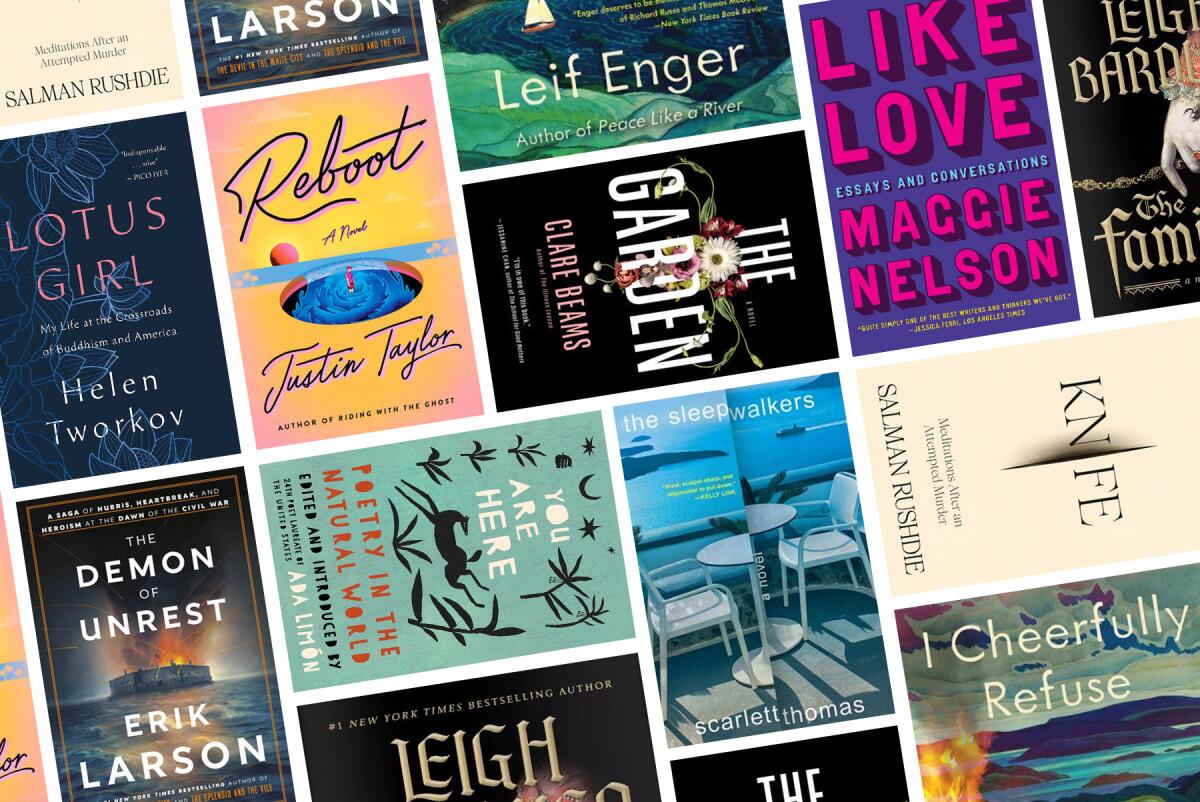
- Show more sharing options
- Copy Link URL Copied!
Critic Bethanne Patrick recommends 10 promising titles, fiction and nonfiction, to consider for your April reading list.
April’s book releases cover some difficult topics, including Salman Rushdie discussing his 2022 maiming, Leigh Bardugo’s fiction about the dark arts and Ada Limón’s poetry anthology about our fragile world. However, like April, there is also sunshine: Leif Enger’s wild Great Lakes love story, Helen Tworkov’s beautiful memoir of Buddhism and a collection of the inimitable Maggie Nelson’s essays. Happy reading, happy spring!
I Cheerfully Refuse: A Novel By Leif Enger Grove Press: 336 pages, $28 (April 2)

An unusual and meaningful surprise awaits readers of Enger’s latest, which takes place largely on Lake Superior, as a man named Rainy tries to reunite with his beloved wife, Lark. While the world around this couple, a dystopian near-future American where billionaires control everything, could not be bleaker, the author’s retelling of the myth of Orpheus (who went to the underworld to rescue his wife) contains the authentic hope of a born optimist.
The Familiar: A Novel By Leigh Bardugo Flatiron Books: 400 pages, $30 (April 9)
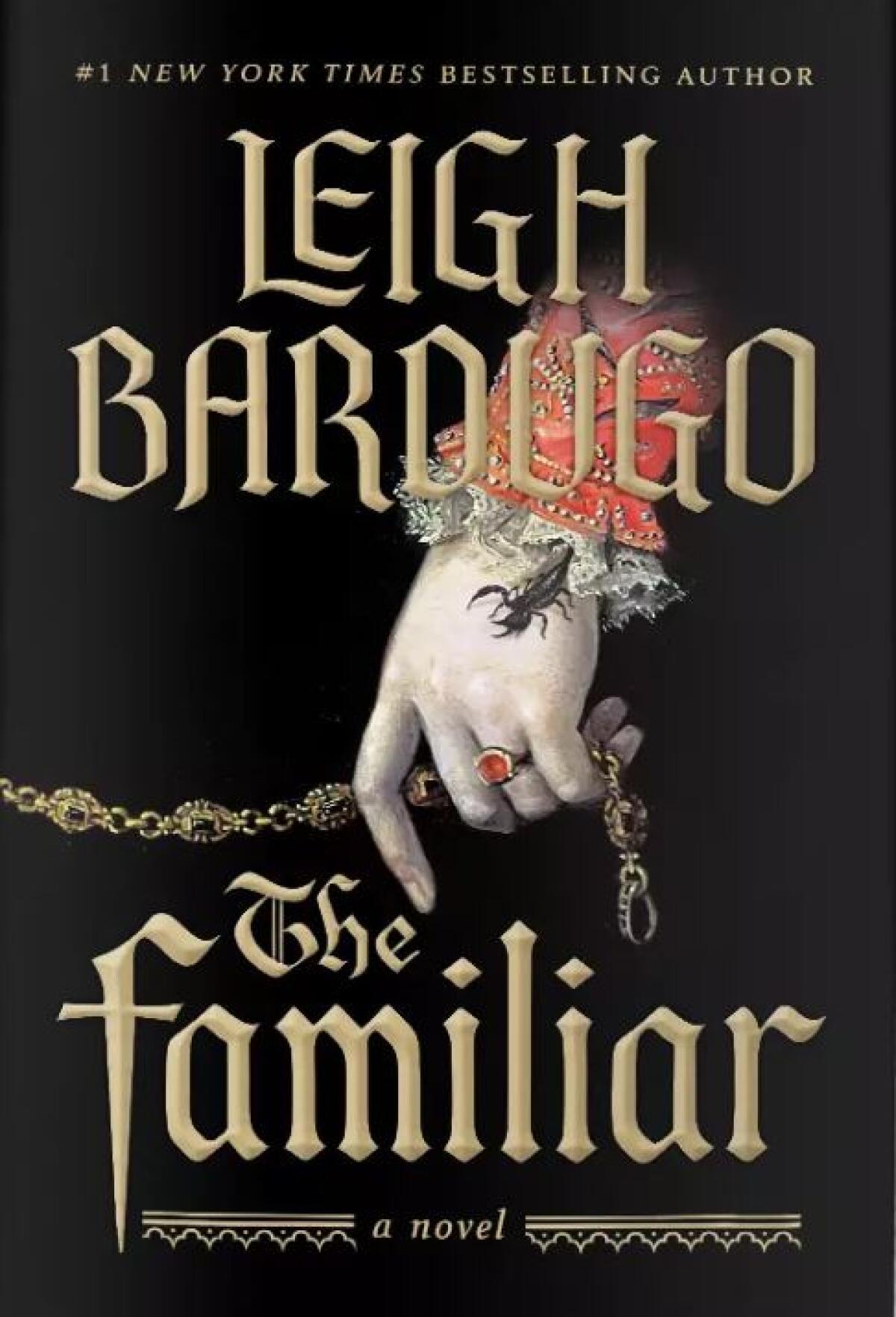
Bardugo departs from novels of dark academia in a standalone to make the hairs on your neck stand up, set in 16th century Spain. A hidden Sephardic Jew and scullery maid named Luzia Cotado matches wits with fellow servant Guillén Santángel. Luzia discovers a secret of Guillén’s, but she’s already fallen in love with him. And because he knows hers, too, they might both avoid the Spanish Inquisition. It’s a gorgeous tale of enchantments both supernatural and earthly.
The Sleepwalkers: A Novel By Scarlett Thomas Simon & Schuster: 304 pages, $28 (April 9)

A couple honeymoons at a Greek resort. What could go wrong? In Thomas’ hands, plenty – especially as the author has never written a comfortable story; her books, from “PopCo ” to “Oligarchy,” crackle with unreliable characters, as well as big philosophical ideas. In this case, the new marriage’s breakdown is chronicled through letters between the spouses, and sometimes bits of ephemera, that ultimately untangle a dark mystery relating to the title.
The Garden: A Novel By Clare Beams Doubleday: 304 pages, $28 (April 10)

Few novels of literary fiction are written as well as “The Garden,” let alone given its sadly relevant retro setting, a 1940s country-estate obstetrical program. Irene Willard walks through its gates having endured five miscarriages; pregnant again, she and her war-veteran husband George desperately hope for a live birth. But as Irene discovers more about the woman who controls all here, Dr. Bishop, she fears carrying to term as much as she once feared pregnancy loss.
Reboot: A Novel By Justin Taylor Pantheon: 304 pages, $28 (April 23)
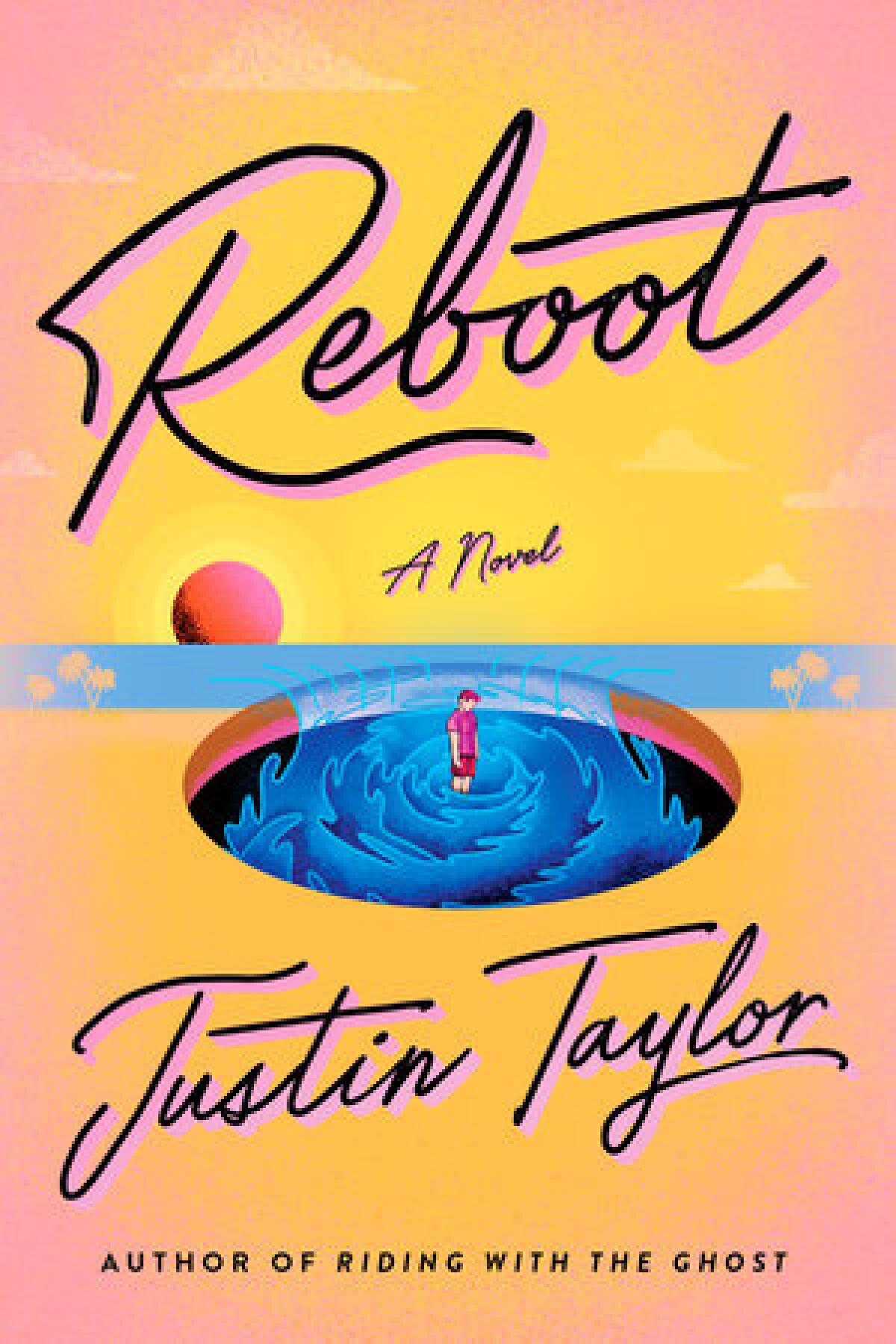
David Crader, former teen TV heartthrob, just wants to reboot his career when his old show “Rev Beach” has a moment. His life has devolved through substance abuse, divorce and underemployment. But when he and colleagues launch a remake, devolution continues: The protagonist’s struggles are mirrored by climate-change issues, from flooding to wildfires. Despite that darkness, Taylor’s gift for satire might make this a must-read for 2024 beach bags.
You Are Here: Poetry in the Natural World By Ada Limón (Editor) Milkweed Editions: 176 pages, $25 (April 2)

A wondrous artist herself, Limón is currently poet laureate of the United States, and this anthology is part of her signature project, “You Are Here,” which will also feature poetry as public art in seven national parks. Released in conjunction with the Library of Congress, the collection features 50 previously unpublished poems by luminaries including Jericho Brown, Joy Harjo, Carl Phillips and Diane Seuss, each focusing on a piece of regional landscape.
Like Love: Essays and Conversations By Maggie Nelson Graywolf Press: 336 pages, $32 (April 2)

While all of the pieces in Nelson’s new book have previously been published elsewhere, they’re made fresh here both through being collected and through their chronological placement. Readers can practically watch Nelson’s incisive mind growing and changing as she speaks with colleagues such as Hilton Als and Judith Butler, or as she writes about queerness, motherhood, violence, the lyrics of Prince and the devastating loss of a friend.
Knife: Meditations After an Attempted Murder By Salman Rushdie Random House: 204 pages, $28 (April 16)

On Aug. 12, 2022, the author Salman Rushdie was speaking at upstate New York’s Chautauqua festival when a man rushed the stage and attempted to murder him. Rushdie, a target of Iranian religious leaders since 1989, was permanently injured. In this book, he shares his experience for the first time, having said that this was essential for him to write. In this way, he answers violence with art, once again reminding us all that freedom of expression must be protected.
Lotus Girl: My Life at the Crossroads of Buddhism and America By Helen Tworkov St. Martin’s Essentials: 336 pages, $29 (April 16)
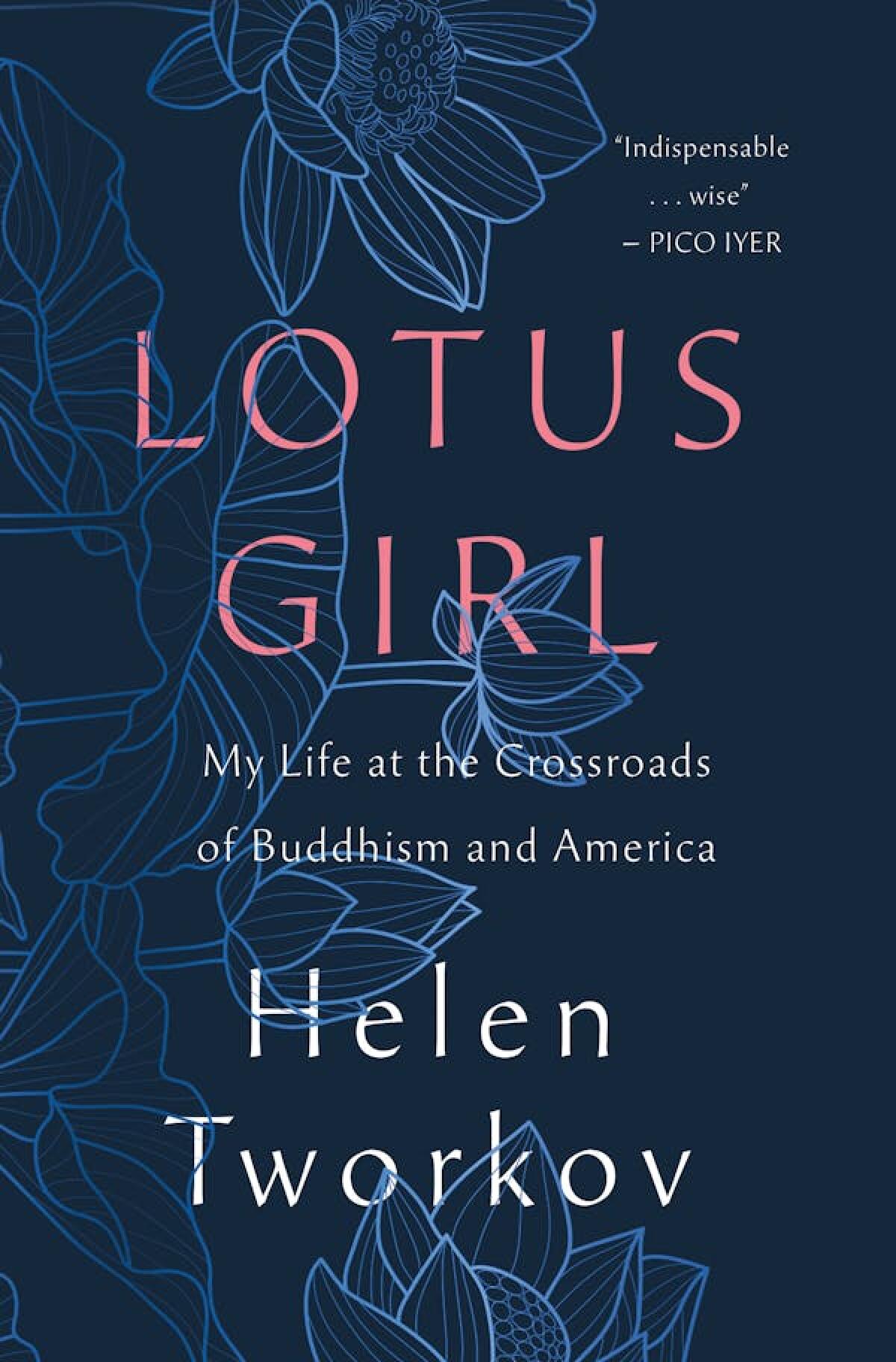
Dworkov, founder of the magazine Tricycle, chronicles her move from a 1960s young-adult interest in Buddhism to travels through Asia and deep study in the United States of the different strands that follow the Buddha’s teachings. Tworkov mentions luminaries such as the artist Richard Serra, the composer Charles Mingus and the Dalai Lama, but she’s not name dropping. Instead, she’s strewing fragrant petals from her singular path to mindfulness that may help us find ours.
The Demon of Unrest: A Saga of Hubris, Heartbreak, and Heroism at the Dawn of the Civil War By Erik Larson Crown: 592 pages, $35 (April 30)

Even diehard Civil War aficionados will learn from Larson’s look at the six months between Lincoln’s 1860 election and the surrender of Union troops under Maj. Robert Anderson at Charleston’s Ft. Sumter. Larson details Anderson’s secret Christmas redeployment and explores this individual’s contradictions as a former slave owner who loyally follows Lincoln’s orders. The author also shares first-person perspective from the famous diaries of the upper-class Southerner Mary Chesnut. All together, the book provides a riveting reexamination of a nation in tumult.
More to Read

The week’s bestselling books, March 24
March 20, 2024
The week’s bestselling books, March 10
March 6, 2024
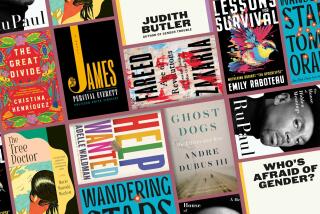
10 books to add to your reading list in March
Feb. 1, 2024
A cure for the common opinion
Get thought-provoking perspectives with our weekly newsletter.
You may occasionally receive promotional content from the Los Angeles Times.
More From the Los Angeles Times
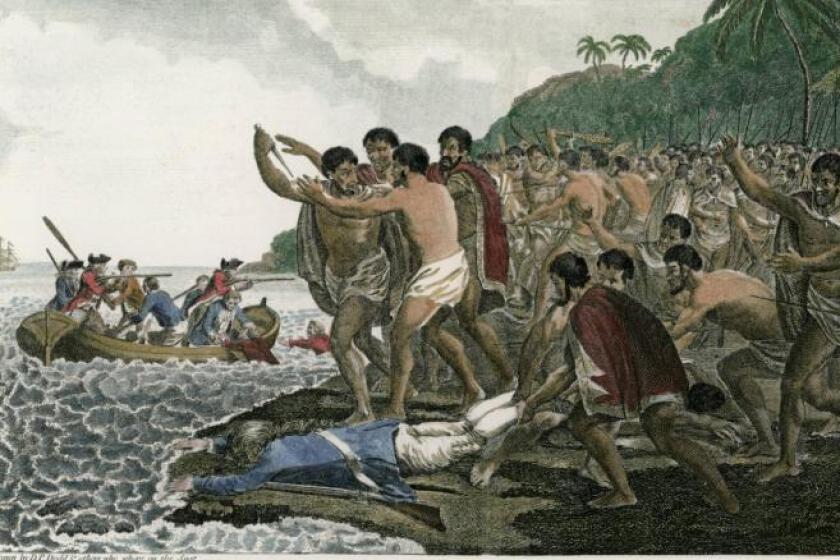
The canonized and vilified Capt. James Cook is ready for a reassessment

How many lives can one author live? In new short stories, Amor Towles invites us along for the ride
March 29, 2024

The photo that wrapped Marlon Brando’s homoerotic swagger in a tight leather jacket
March 27, 2024

Storytellers can inspire climate action without killing hope
March 26, 2024

- About Ayn Rand
- Novels & Works
- Newsletter Sign Up
Atlas Shrugged Essay Contest
Students > Essay Contests > Atlas Shrugged
✓ Open to all high school, college, and graduate students worldwide.
Annual Grand Prize
June 14, 2024
Summer Entry Deadline
Book Length
Interested in participating?
Fill out the contact form below, and we’ll email you with more information about this year’s contest—including instructions on how to enter.
Thank you for signing up!
We’ll email you more information about this year’s contest—including instructions on how to enter. In the meantime, please let us know at [email protected] if you have any questions. We’re happy to help.
What is Atlas Shrugged?
The astounding story of a man who said that he would stop the motor of the world—and did.
Tremendous in scope, breathtaking in its suspense, Atlas Shrugged is unlike any other book you have ever read. It is a mystery story, not about the murder of a man’s body, but about the murder—and rebirth—of man’s spirit.
How It Works
Every three months there is a new seasonal entry round, with its own unique essay prompt. You may compete in any or all of these entry rounds.
The top three essays from each season will be awarded a cash prize. The first-place essay from each season will advance to compete for the annual grand prize.
The first-place essay from each season will be eligible to contend for the annual first-place title, with the opportunity to secure a grand prize of $25,000.
Challenging Essay Topics
Each entry round features a unique topic designed to provoke a deeper understanding of the book’s central themes and characters.
Essays must be written in English only and be between 800 and 1,600 words in length.
Questions? Write to us at [email protected] .
- Summer Prompt
- Fall Prompt
- Winter Prompt
The essay prompt for our fall entry period has not yet been determined. We will post it here as soon it’s available.
The essay prompt for our winter entry period has not yet been determined. We will post it here as soon it’s available.
Grand Prize
Master our grading standards.
Essays are judged on whether the student is able to justify and argue for his or her view, not on whether the Institute agrees with the view the student expresses.
Our graders look for writing that is clear, articulate, and logically organized. Essays should stay on topic, address all parts of the selected prompt, and interrelate the ideas and events in the novel.
Winning essays must demonstrate an outstanding grasp of the philosophic meaning of Atlas Shrugged .
Organization
Understanding, contest timeline, discover the power of atlas shrugged.
Atlas Shrugged is a mystery novel like no other. You enter a world where scientists, entrepreneurs, artists, and inventors are inexplicably vanishing—where the world is crumbling.
And what you discover, by the end, is an uplifting vision of life, an inspiring cast of heroes, and a challenging new way to think about life’s most important issues.
Learn more and request a free digital copy of the book today.

Learn from Past Winners
Curious to know what makes for a winning essay in the Atlas Shrugged contest? Check out some of the essays written by our most recent grand-prize winners.
To varying degrees, they all display an excellent grasp of the philosophic meaning of Atlas Shrugged .
Click here to see the full list of 2022 contest winners.
Jacob Fisher
Graduate Student
Stanford University
Stanford, California
United States
Mariah Williams
Regis University
Denver, Colorado

Nathaniel Shippee
University of Illinois
Chicago, Illinois

Samuel Weaver
St. John’s College
Annapolis, Maryland

Patrick Mayles
Graduate student
Universidad Nacional de Colombia

Christina Jeong
College Student
University of Notre Dame
Notre Dame, Indiana

Improve Your Writing Skills
Other than endorsing perfect punctuation and grammar in English, the Ayn Rand Institute offers no advice or feedback for essays submitted to its contests. However, we do recommend the following resources as ways to improve the content of your essays.
The Atlas Project
Writing: a mini-course.

Sign Up for Contest Updates!
Want to stay up-to-date on any new developments to the contest? Sign up to our email list below.
We’ll send you periodic reminders about the contest deadlines, as well as helpful resources to ensure you get the most out of your experience reading and writing about Ayn Rand’s Atlas Shrugged .
Great! Let's get you a copy of the book.
Atlas Shrugged is a mystery novel like no other. You enter a world where scientists, entrepreneurs, artists, and inventors are inexplicably vanishing—where the world is crumbling.
What you discover, by the end, is an uplifting vision of life, an inspiring cast of heroes, and a challenging new way to think about life’s most important issues.
You're almost there!
Enter your school details below to receive a free digital copy of Atlas Shrugged .
Let's log you in to your account.
Success! Let's log you in to your account.
We've received your request for a free copy of Atlas Shrugged and will be emailing you details on how you can access it shortly. In the meantime, are you ready to begin the entry process?
Please enter your password below, either to create a new account or to sign in to your existing account for the contest. Once you're logged in to your account, you'll be able to save your entry progress and return later to complete it.
Hi, . Ready to enter the contest?
Now that you've logged in to your account, let's get you started on your entry for the contest. It's OK if you haven't finished reading the book or writing your essay yet. We'll save your progress for you to continue later.
Then, when you're ready to submit your essay, just return to our platform. Your saved entry will be right where you left off. So, why wait? Take the first step, and start your entry today.

- Privacy Policy
- Terms & Conditions
- Ayn Rand Global
- Ayn Rand Institute eStore
- Ayn Rand University App
Updates From ARI
Copyright © 1985 – 2024 The Ayn Rand Institute (ARI). Reproduction of content and images in whole or in part is prohibited. All rights reserved. ARI is a 501(c)(3) nonprofit organization. Contributions to ARI in the United States are tax-exempt to the extent provided by law. Objectivist Conferences (OCON), Ayn Rand Conference (ARC), Ayn Rand University (ARU) and the Ayn Rand Institute eStore are operated by ARI. Payments to OCON, ARC, ARU or the Ayn Rand Institute eStore do not qualify as tax-deductible contributions to the Ayn Rand Institute. AYN RAND, AYN RAND INSTITUTE, ARI, AYN RAND UNIVERSITY and the AYN RAND device are trademarks of the Ayn Rand Institute. All rights reserved.
Advertisement
Supported by
editors’ choice
8 New Books We Recommend This Week
Suggested reading from critics and editors at The New York Times.
- Share full article
Our fiction recommendations this week include a “gleeful romp” of a series mystery, along with three novels by some heavy-hitting young writers: Téa Obreht, Helen Oyeyemi and Tommy Orange. (How heavy-hitting, and how young? Consider that Obreht was included in The New Yorker’s “20 Under 40” issue in 2010 — and she’s still under 40 today. So is Oyeyemi, who was one of Granta’s “Best Young British Novelists” in 2013, while Orange, at 42, has won the PEN/Hemingway Award, the John Leonard Prize and the American Book Award. The future is in good hands.)
In nonfiction, we recommend a painter’s memoir, a group biography of three jazz giants, a posthumous essay collection by the great critic Joan Acocella and a journalist’s look at American citizens trying to come to terms with a divided country. Happy reading. — Gregory Cowles
THE MORNINGSIDE Téa Obreht
After being displaced from their homeland, Silvia and her mother move into the Morningside, a weather-beaten luxury apartment building in “Island City,” a sinking version of New York in the middle of all-out climate collapse. Silvia learns about her heritage through the folk tales her aunt Ena tells her, and becomes fascinated with the mysterious woman who lives in the penthouse apartment.

“I marveled at the subtle beauty and precision of Obreht’s prose. … Even in the face of catastrophe, there’s solace to be found in art.”
From Jessamine Chan’s review
Random House | $29
A GRAVE ROBBERY Deanna Raybourn
In their ninth crime-solving tale, the Victorian-era adventuress and butterfly hunter Veronica Speedwell and her partner discover that a wax mannequin is actually a dead young woman, expertly preserved.

“Throw in an assortment of delightful side characters and an engaging tamarin monkey, and what you have is the very definition of a gleeful romp.”
From Sarah Weinman’s crime column
Berkley | $28
THE BLOODIED NIGHTGOWN: And Other Essays Joan Acocella
Acocella, who died in January, may have been best known as one of our finest dance critics. But as this posthumous collection shows, she brought the same rigor, passion and insight to all the art she consumed. Whether her subject is genre fiction, “Beowulf” or Marilynne Robinson, Acocella’s knowledge and enthusiasm are hard to match. We will not see her like again.

"Some critics are haters, but Acocella began writing criticism because she loved — first dance, and then much of the best of Western culture. She let life bring her closer to art."
From Joanna Biggs’s review
Farrar, Straus & Giroux | $35
WANDERING STARS Tommy Orange
This follow-up to Orange’s debut, “There There,” is part prequel and part sequel; it trails the young survivor of a 19th-century massacre of Native Americans, chronicling not just his harsh fate but those of his descendants. In its second half, the novel enters 21st-century Oakland, following the family in the aftermath of a shooting.

“Orange’s ability to highlight the contradictory forces that coexist within friendships, familial relationships and the characters themselves ... makes ‘Wandering Stars’ a towering achievement.”
From Jonathan Escoffery’s review
Knopf | $29
PARASOL AGAINST THE AXE Helen Oyeyemi
In Oyeyemi’s latest magical realist adventure, our hero is a woman named Hero, and she is hurtling through the city of Prague, with a shape-shifting book about Prague, during a bachelorette weekend. But Hero doesn’t seem to be directing the novel’s action; the story itself seems to be calling the shots.

“Her stock-in-trade has always been tales at their least domesticated. … In this novel, they have all the autonomy, charisma and messiness of living beings — and demand the same respect.”
From Chelsea Leu’s review
Riverhead | $28
3 SHADES OF BLUE: Miles Davis, John Coltrane, Bill Evans, and the Lost Empire of Cool James Kaplan
On one memorable occasion in 1959, three outstanding musicians came together for what may be the greatest jazz record ever, Davis’s “Kind of Blue.” Kaplan, the author of a Frank Sinatra biography, traces the lives of his protagonists in compelling fashion; he may not be a jazz expert but he knows how to tell a good story.

“Kaplan has framed '3 Shades of Blue' as both a chronicle of a golden age and a lament for its decline and fall. One doesn’t have to accept the decline-and-fall part to acknowledge that he has done a lovely job of evoking the golden age.”
From Peter Keepnews’s review
Penguin Press | $35
WITH DARKNESS CAME STARS: A Memoir Audrey Flack
From her early days as an Abstract Expressionist who hung out with Jackson Pollock and Willem de Kooning at the Cedar Bar to her later success as a pioneering photorealist, Flack worked and lived at the center of New York’s art world over her long career; here she chronicles the triumphs, the slights, the sexism and the gossip, all with equal relish.

“Flack is a natural, unfiltered storyteller. … The person who emerges from her pages is someone who never doubts she has somewhere to go.”
From Prudence Peiffer’s review
Penn State University Press | $37.50
AN AMERICAN DREAMER: Life in a Divided Country David Finkel
Agile and bracing, Finkel’s book trails a small network of people struggling in the tumultuous period between the 2016 and 2020 U.S. presidential elections. At the center is Brent Cummings, a white Iraq war veteran who is trying to cope with a country he no longer recognizes.

“Adroitly assembles these stories into a poignant account of the social and political mood in the United States. … A timely and compelling argument for tolerance and moral character in times of extreme antagonism.”
From John Knight’s review
Random House | $32
Explore More in Books
Want to know about the best books to read and the latest news start here..
James McBride’s novel sold a million copies, and he isn’t sure how he feels about that, as he considers the critical and commercial success of “The Heaven & Earth Grocery Store.”
How did gender become a scary word? Judith Butler, the theorist who got us talking about the subject , has answers.
You never know what’s going to go wrong in these graphic novels, where Circus tigers, giant spiders, shifting borders and motherhood all threaten to end life as we know it .
When the author Tommy Orange received an impassioned email from a teacher in the Bronx, he dropped everything to visit the students who inspired it.
Do you want to be a better reader? Here’s some helpful advice to show you how to get the most out of your literary endeavor .
Each week, top authors and critics join the Book Review’s podcast to talk about the latest news in the literary world. Listen here .

IMAGES
VIDEO
COMMENTS
The Pearl has some superficial aspects of a novella. Its length—eighty-seven pages—and its division into short chapters suggest that it is a novel in miniature, a piece of prose that concisely portrays one character's soul. Its moments of interior description, the sounds of "The Song of the Enemy" and "The Song of the Family ...
Get custom essay. In conclusion, John Steinbeck's novella, "The Pearl," effectively conveys the destructive power of greed through the character development of Kino, the use of symbolism, and the reactions of other characters. By examining how greed corrupts individuals and leads to tragic consequences, Steinbeck prompts readers to reflect on ...
Steinbeck derived some aspects of The Pearl from his screenplay for the 1941 documentary, The Forgotten Village, which depicts the contentious coexistence of modern and folk medicine in a Mexican town.The novel's central plot, however, is based on the Mexican legend of a young boy who discovers a great pearl, which Steinbeck later narrated in his 1951 Log from the Sea of Cortez.
The plight of the impoverished is a consistent theme in Steinbeck's work, including The Grapes of Wrath and Of Mice and Men. Although these novels dealt with white protagonists, Steinbeck turned to the plight of Mexicans for The Pearl based on the 1942 and 1943 Zoot Suit Race Riots in Los Angeles. By the time that Steinbeck wrote The Pearl, he ...
The Pearl is a novella by the American author John Steinbeck.The story, first published in 1947, follows a pearl diver, Kino, and explores man's purpose as well as greed, defiance of societal norms, and evil.Steinbeck's inspiration was a Mexican folk tale from La Paz, Baja California Sur, Mexico, which he had heard in a visit to the formerly pearl-rich region in 1940.
The Pearl is a novella written by American author John Steinbeck and published in 1947. The novella is considered a parable; a story meant to teach a moral or spiritual lesson. The story takes for ...
The Pearl is a 1947 historical fiction novella by John Steinbeck.It is an expansion of his earlier short story, "The Pearl of the World," published in the Woman's Home Companion in 1945.Steinbeck also co-wrote the screenplay for a 1947 film adaption of the novella titled La perla, directed by Emilio Fernández.Citations in this guide correspond to the 1994 Penguin Books edition.
The Pearl takes place in a small village on the outskirts of La Paz, California. It begins in the brush house of Kino, Juana, and their baby, Coyotito, a family of Mexican Native Americans.In the midst of Kino and Juana's morning routine, Coyotito is stung by a scorpion that has fallen into his hanging box.. Aware of how poisonous the scorpion's sting is, Juana orders that the doctor be ...
In this novel, Kino possesses innocence and purity at the beginning of the novel, and these simple, beautiful qualities are destroyed after his discovery of the pearl. By inverting the symbolism, Steinbeck emphasizes the parable aspect of his story — that is, we examine what happens to a man when he acquires something so valuable as the Pearl ...
The value and evaluation of material entities is a central theme in The Pearl. The value of the pearl, for example, requires reassessment throughout the novel: at the moment of its discovery, it seems to be worth Coyotito 's life. That the pearl-dealers then so underestimate the price of the pearl reveals how distant the monetary worth of ...
The Theme Of Group Behavior In The Pearl By John Steinbeck. The article is a study exploring the pattern of group activity in John The Pearl's novel. There's a major influence on other individuals from Stein show group behavior. We are the long-term basis of human life. Steinbeck's group-man theory is based on Darwinian interpretation of...
THE NOVEL! Style: The Pearl is a short novel or novella which is told in the form of an allegory or PARABLE--a short, simple work with little dialogue illustrating a lesson or a larger truth often on the subject of good and evil. In a PARABLE, good and evil are clearly defined--everything is black and white, there are no shades of gray.
The Pearl. The Pearl is a novella by the author, John Steinbeck. The genre of this book is fiction parable. The theme is that greed can lead to a dark ending. The major conflicts in this story are man vs. man, man vs. nature, and man vs. society. The point of view is in third person.
The Pearl by John Steinbeck. Kino plans to travel to another city to sell this pearl, but his brother warns that the pearl is evil and he should just sell it. We will write. a custom essay specifically for you by our professional experts. 809 writers online.
The Pearl, short story written by John Steinbeck, the author in which he presents Coyotito, the baby of Kino, a poor fisherman and his wife Juana. Everything starts off when the calamity strikes over the family when the infant Coyotito gets stung by a scorpion and the doctor refuses to heal the baby because of their race and lack of money.
Subsequent to finding 'the pearl of the world,' Kino and Juana are hit with a brutal reality and hardship that comes with the pearl and it's worth. John Steinbeck's expected topic of The Pearl is that voracity for objects can cloud judgment and feelings. During the story, Kino settles on choices dependent on chances the pearl could bring.
Using examples drawn from John Steinbegd's novel The Pearl, write an essay in support of this statement. (Accept a plausible introduction) The doctor gives coyotito the wrong medicine in order to manipulate Kino Kino is injured when thugs try to steal the pearl He didn't get the opportunity to sell the pearl. His house is burnt down His ...
NPR's Scott Detrow speaks to Hanif Abdurraqib about the new book There's Always This Year. It's a mix of memoir, essays, and poems, looking at the role basketball played in Abdurraqib's life.
Full Book Analysis. The Pearl is a retelling of a Mexican parable. The novella tells a classically tragic story of greed, obsession, and man's endless thirst for a better life through the lens of anti-colonialism. The main character, Kino, is a poor indigenous man who finds a giant pearl that could change the trajectory of his life.
In her first essay collection, Becca Rothfeld demonstrates that sometimes, more really is more. By David Gates David Gates teaches in the M.F.A. program at St. Joseph's University. When you ...
Critic Bethanne Patrick recommends 10 promising titles, fiction and nonfiction, to consider for your April reading list. April's book releases cover some difficult topics, including Salman ...
The astounding story of a man who said that he would stop the motor of the world—and did. Tremendous in scope, breathtaking in its suspense, Atlas Shrugged is unlike any other book you have ever read. It is a mystery story, not about the murder of a man's body, but about the murder—and rebirth—of man's spirit.
Crafting the arguments in "You Get What You Pay For," her first essay collection, "felt like pulling apart a long piece of taffy," says the author of "Magical Negro."
Ms. Taylor and Ms. Hunt-Hendrix are political organizers and the authors of the book "Solidarity: The Past, Present, and Future of a World-Changing Idea." These days, we often hear that ...
In nonfiction, we recommend a painter's memoir, a group biography of three jazz giants, a posthumous essay collection by the great critic Joan Acocella and a journalist's look at American ...